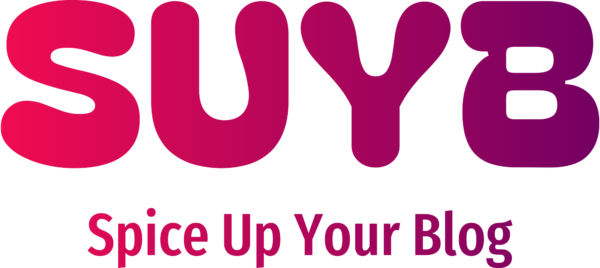
If your a blogger or you might be among those few, who don’t have a blog yet but they’re eager to find out what’s all about and ready to start one.You have probably heard great success stories about how a blog helped many people to improve their financial status, or helped entrepreneurs to develop and to brand their personal businesses.
Either that’s the case, or you’re someone who has something new and great to share with the world, you should or actually must nowadays have a blog of your own and start self-publishing (blogging) and self-marketing (social media).
Know Your Audience
Start by identifying your audience, what problems they face and most important what can you do about it. The thing with blogs is that everybody can write one, but most certainly just a few will get revenue from it. And there’s a simple explanation for that: you have to put value in what you write. If your posts are relevant to your followers meaning that by writing them you reach your audience’s needs, the chances are that your blog will be successful.
One way of finding your niche (and one of the most popular) is to ask yourself what do you like/know most ? In what area of interest are you feeling most comfortable talking about? After reaching a conclusion you then need to put that against what will most likely answer to a reader’s problem. Once you’ve climbed the three this far, you can start enjoying the fruits. From the plethora of monetization models available, you’ll find below a handful of solutions that will make your blog sell.
Google Adsense
Google AdSense is a flexible, hassle-free way to earn revenue by showing relevant and engaging ads alongside your online content. There’s a reason for why it’s on the top of the list, and that’s because it’s the preferred choice of monetization amongst bloggers, but please keep in mind that Adsense earnings are still related to the kind of traffic you can drive to your blog. That means if you do not generate enough relevant traffic on your blog, you probably won’t make any profit or it will be minimal.
If you want to dig more (and you really should) there’s a lot of terminology that you need to understand such as Click Through Rate (CTR), Effective CPM (eCPM), Impressions, etc. There’s an entire glossary that you can consult here.
There are some success stories out there but the important thing to understand is that it is not easy at all to generate significant revenues with Google Adsense. You really have to devote time (years) into writing quality content and drive traffic to your blog which can grow into a stable community that can eventually be monetized.
Direct ad sales
Direct ad sales work in the way that you virtually sell advertising space on your blog and it holds a major advantage over affiliate sales in the form of the full 100% revenue. That means you get to interact with advertisers and keep all the ad revenue to yourself. Still, if you want to focus on building your content, you can sell ads through networks as BuySellAds, AdRoll or BlogAds as they can offer you multiple monetization tools. Use them also to check your niche ad rates so you can charge accordingly and get sustainable and recurring revenue. So don’t refrain yourself in using direct ad sales as a method to make profit, because smaller websites or blogs have been succesfully selling direct ads.
Sponsored reviews
If you’ve paid attention to what was said above, finding your niche is all about what makes you feel comfortable talking about, so writing a review for a product or a service you use and like, can be a really lucrative source of income. For example SponsoredReviews.com is a blog advertising network that allows you to build links, increase traffic, and improve search engine rankings on your website(s).
Bloggers on SponsoredReviews.com will write blog posts about your blog on their own and advertisers will ask you to write posts about their blog, this is called paid posts and it’s another way to increase your search engine rankings and traffic. The income ratio is 50:50, so for example if you have written at $50, you’ll get $25.
Affiliate sales
Affiliate marketing is just as easy as it sounds, meaning that you have to promote someone else’s products or services, while you’ll be paid for every referral sale. The mechanism is even simpler: if your audience clicks on a link or ad belonging to one of your affiliates and buys any of their products or services, you get a percentage of that sale. This can really be profitable once you drive significant traffic on your blog, considering that the chances of a sale are increasing with every new visitor of the blog.
Selling your own eBooks
Your own eBook may come as a natural evolving step of your blog. You have to keep an important thing in mind if you think an e-book is a fantastic idea: failure is not an exception therefore you must choose the right subject, the right topic. This includes knowing your readers and before starting to sell, you must set the right price not only by guessing it, but by doing a bit of market research – checking your competitors’ price for example or even ask your closest 100 readers. You could even insert your first eBook in the giveaways or make some contests as this will generate the base for your next eBook, which will sell higher.
Selling other materials
You’ve probably heard about selling stuff on blogs – look at the fashion blogs which sell clothes or cosmetics. Well, this is called merchandising and it’s an excellent way to make money while blogging, especially if you have a blog related to a type of consumer product. With a nice and catchy slogan, mascot or personal design, you can sell almost everything, from mugs to T-shirts with your trade-mark. You could even sell yourself as the product. Many people who blog about the area of their expertise go on to sell coaching or consulting services. There are also some popular product sales programs such as CafePress, Zazzle or Printfection that you can use.
Paid for content
One of the most straight forward methods to make some profit from blogging is getting your readers to pay for the content. A true example of paid for content is Baekdal.com, a website founded in 2004 by Thomas Baekdal as a magazine about “the great experience” that eventually shifted its focus towards “what does it all mean”. When he noticed that only 20% of his traffic is reading the valuable content, and an estimated 3% of them are potential subscribers, he realized that he must reach them by “embracing a multi-channel strategy (be where people are), connecting with them by embracing the link, and demonstrating the value by focusing on things that matter to them“. What Thomas Baekdal achieved was getting his subscribers to pay for the valuable content.
Social micropayments
According to Wikipedia, micropayments were initially devised as a way of allowing the sale of online content and were envisioned to involve small sums of only a few cents. These transactions would enable people to sell content on the Internet and would be an alternative to advertising revenue. This can only mean good business to you and your blog.
The world’s first social micropayment system is Flattr and it was created from the need to be able to donate small amount of money to blogs or websites, from the need “to help people share money, not just content“. “We want to encourage people to share money as well as content” as Peter Sunde, Flattr co-founder said.
Turning mobile
This will certainly puzzle you since there’s no mention on the web on how does turning mobile makes your blog profitable. Actually it does. The web itself is becoming a more mobile-centric environment than ever, and that means you can get more readers from mobile. And as I mentioned already, the more traffic you drive to your blog the bigger the chances are that your monetization plans will pay off.
There are several ways to turn your blog mobile, and the one that’s currently in the spotlight is having a web app. Currently Onswipe, Pressly and Appticles can achieve this for you, but you could also create a mobile friendly or a responsive version of your website, this being just a matter of choice and initial investment. In terms of monetization you could use the social micropayment method described earlier, paywalls or ads.
The reality
The best tip for monetizing from Julia Scott, founder of Bargainbabe.com is “Never stop brainstorming revenue streams“. Including “advertising, syndication, freelance, donations, events, partnerships, affiliate advertising, content sharing, and speaking gigs. There are also grants, sponsorships, voluntary memberships, and paywalls”.
So what’s the best way to monetize your online activity? Most likely all of the above apply but in different percentages as it is important to diversify your income. Don’t be dissapointed in the beggining when all of it will seem impossible or to far to reach and focus on your achieving your targets. Until you receive some traffic and become trusted as a blogger so that selling advertising gets profitable, you should at least place some affiliate adds on the website that will trigger earning eventualy. After all it seems that the best way to make profit from your blog is to have people reading it.









